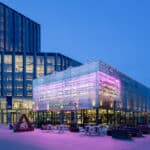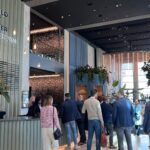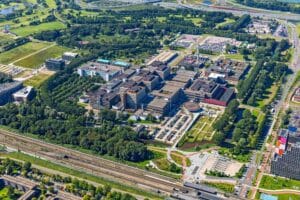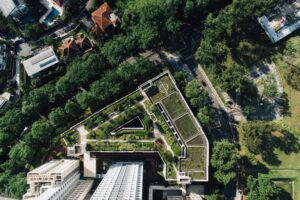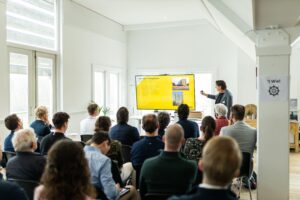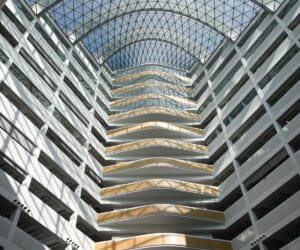
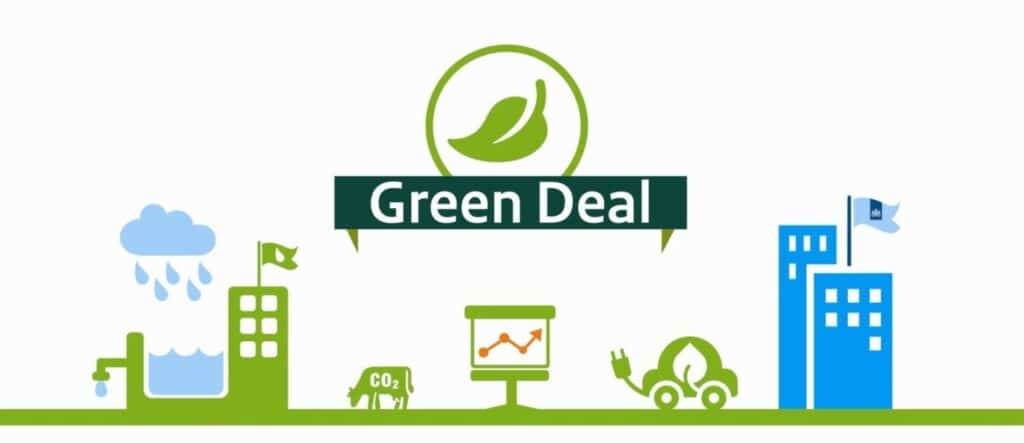
Green Deal Circular Buildings
How do you create a circular building, and what are the first lessons to make buildings sustainable and future-proof in a cost-effective and practical way? CFP shares the lessons from the ‘Green Deal Circular Buildings’ project and from practice.
Green Deal Circular Buildings
CFP Green Buildings was the initiator of the Green Deal Circular Buildings project. More than 60 parties took part, including the Dutch Ministry of Economic Affairs, the Ministry of Infrastructure and the Environment, and the Ministry of the Interior and Kingdom Relations. The Green Deal Circular Buildings project focused on creating maximum value in providing sustainable accommodation while minimising the use of virgin materials and other raw materials. The materials used retain their value during and after use. The aim of this exercise was for CFP to help organisations improve their own circularity.
Circularity for existing buildings
The focus of the Green Deal is mainly on the existing building, without directly ignoring other building processes. The Netherlands, for example, has approximately 50 million m2 of office space, while only 0.2 million m2 of new office space is built each year. The impact of the 50 million m2 of existing offices is therefore many times greater. In a large number of these offices, adjustments will be made to the interior or exterior of the building over a period of 15 years. This offers many opportunities and possibilities for making these buildings circular.
Nine important themes in circular decision-making
Circularity is about reducing our consumption of raw materials. We do this in buildings by ceasing to use new non-renewable raw materials. Existing raw materials are reused and if they are not available, renewable raw materials are used. However, the purpose of a building is not to be circular. Users and owners of buildings have more interests. That’s why circular themes have been defined in the Green Deal that are important for making your building more circular in conjunction with each other.
Adaptive buildings
The adaptive theme provides insight into the adaptability of the building. An adaptive building is suitable for other functions when the demand for the current function no longer exists. The ability to disassemble components in a building determines the suitability of something to be reused or recycled. Effective maintenance can contribute to extending the life of raw materials so that they retain their value for as long as possible. Where raw materials or products cannot or do not have to be used any longer, consideration should be given to possibilities for reuse. The Ellen MacArthur Foundation describes four different options: maintenance, reuse, remanufacturing or recycling. The energy consumed in the circular economy is renewable, through the use, for example, of solar or wind energy. In all cases, efficient energy consumption is necessary to avoid waste.
Value maximisation
In addition to ensuring the continued use of materials, value retention or value maximisation is also important. Raw materials may be fully recyclable, but raw materials in a building that is not used (e.g. due to an unfavourable location) have less value than if they were applied in a used building. Furthermore, healthy buildings have a positive impact on the health of employees and lead to higher productivity and lower absenteeism. Healthy buildings are therefore more future-proof and offer more opportunities for use and the long-term, high-quality application of raw materials. The same goes for safety. When the building provides a safe environment for its users, this has a positive influence on the experiential value of that building, which makes safe buildings more future-proof.
Practical applications in the case of circular pilots
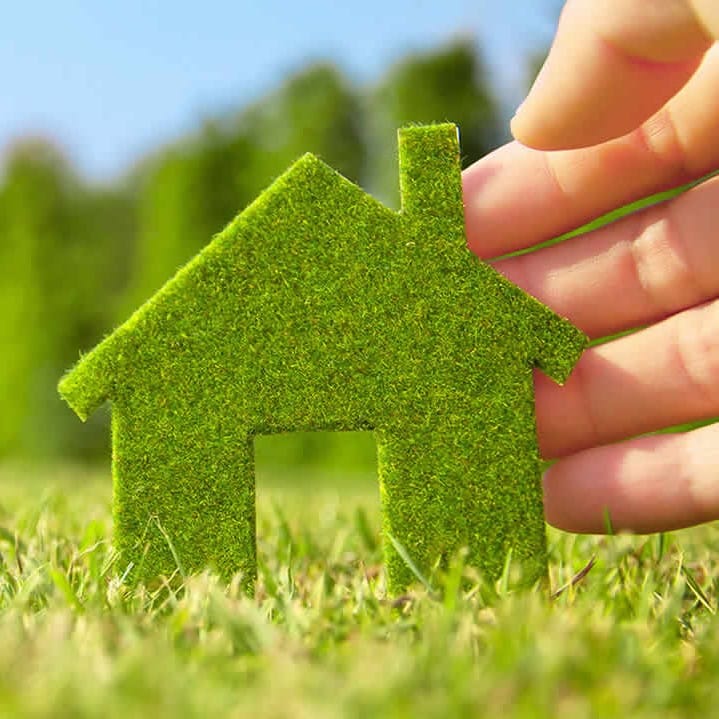
The pilot projects in the Green Deal have shown that raw material reduction and the environmental impact of raw materials are not new and that many technical solutions and innovations are already available. Specialists in this field have been working on this for decades. Initiatives such as cradle to cradle, sustainable energy generation, result-oriented cooperation and performance agreements have been applied for years. However, these initiatives do not always provide sufficient support for making buildings circular in a practical sense.
Implementation of circular initiatives
Many business models and circular transformations are about technical product solutions in the industry sector. This offers building managers and asset managers little support to work with. The challenge lies in implementing the circular initiatives, with the focus of the circular economy – in contrast to other initiatives – being mainly on securing, guaranteeing and closing material cycles.
Circular Scan
In order to close the material cycles and reduce the consumption of raw materials, it is important to map out the consumption and to determine in which areas reduction has the greatest impact. This can be done, for example, by performing a Circular Scan, or by entering into discussions with suppliers in order to make the use and consumption of raw materials clear. A circular scan determines the circular performance of a building, including the improvement potential with business case.
Conclusions from the pilots
The circular pilots show that there are many opportunities to save raw materials. On a larger scale, refurbishments and renovations offer many opportunities, with savings on energy and materials ensuring a profitable business case. On a smaller scale, furniture – from printers to office chairs – can make a circular impact. This is possible by using the longer technical service life at the end of the economic life. In this way, we ensure that we can all live on this earth, now and in the future.


